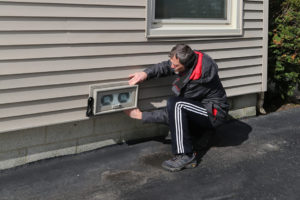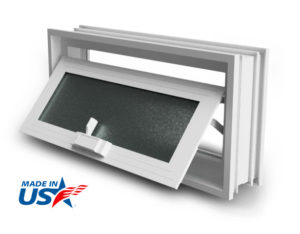How To Inspect A Crawl Space?
A crawl space is a space below the floor of the ground floor of a building. The height of a crawl space is usually less than 3 feet, which means a typical adult won’t be able to stand up straight here (hence the name). The purpose of a crawl space is to allow easy access to fundamental building installations, such as plumbing, electrical, maintenance, and many more. Crawl spaces can be found especially in old buildings or certain new houses that are built in a flood zone. Crawl spaces are home to many problems that can be harmful to the entire building structure.
So How to inspect a crawl space?
The cool, dark, and humid environment attracts unwanted animals and insects and promotes the development of dangerous mold and spores that can enter the living space upstairs through cracks and gaps and seriously affect the health of all residents.
Why Is Regular Crawl Space Inspection Essential?

We cannot stress enough the importance of thoroughly and regularly inspecting the crawl space. Think about it, a hole dug deep in the ground can easily fill with water and lead to many unwanted issues related to the structure of the building and its general safety. Making sure you do everything you can to keep the crawl space safe and dry is crucial to the well-being of your home and your family members.
Regular crawl space inspections can save you a lot of money in the future and lots of unnecessary headaches. It may seem irrelevant to you now, but believe us – a thorough inspection done by professionals might save you from finding out later on about problems or safety hazards that will require expensive repairs.
The safest and most reliable way to have a crawl space inspection is to hire a professional home inspector, who has years of experience and will thoroughly examine your home from top to bottom. Crawl space inspections can be dangerous due to the risk of asbestos, chemicals, collapse, mold, rodents, sewage, or even electrical shock hazards.
Here are some common hazards found in crawl spaces:
Mold and fungus. Unwanted animals, mold, and fungus grow quickly in crawl spaces. They both cause health problems and cause wood to decompose, which may require expensive repairs. Mold spores can potentially enter the living space and produce allergens, irritants, and even toxic substances that can cause illnesses and allergic reactions which, in some cases, can result in life-threatening symptoms.
 Pests and animals. Crawl spaces are ideal for ants, termites, and other pests to grow in. Termites cannot survive for long if they are not in their mud tubes, which can be seen on foundation walls. Carpenter ants, too, are easy to locate and both types of insects can cause serious structural damage. Snakes, spiders, bees, and scorpions may also be sheltering in the crawl space. While they present a few structural hazards to the home, they can definitely harm you!
Pests and animals. Crawl spaces are ideal for ants, termites, and other pests to grow in. Termites cannot survive for long if they are not in their mud tubes, which can be seen on foundation walls. Carpenter ants, too, are easy to locate and both types of insects can cause serious structural damage. Snakes, spiders, bees, and scorpions may also be sheltering in the crawl space. While they present a few structural hazards to the home, they can definitely harm you!
Standing water or sewage. Crawl spaces are subject to water infiltration that can cause a bunch of problems such as microbial growth, odors, damage to stored goods and the risk of electric shock.
A collapse of the structure. If the house is rickety, entering the crawl space can be dangerous. It’s easy to get stuck, stranded or even crushed in an unstable crawl space. Make sure the inspector is informed before they enter the crawl space.
Professional Crawl Space Inspection
During a crawl space inspection, it’s always essential that the person performing the inspection wears the correct personal protective gear before entering: cotton clothing, safety glasses or goggles, gloves, a respirator and bump hat. The inspector will also need a good flashlight that will illuminate the far ends and corners of the area and make it easier to spot any signs of problems.
What To Look At During a Crawl Space Inspection
The building structure
- Observe indications of active water penetration
- Check if any wooden structural elements are in direct contact with water
- Check for improper joist notches/cuts, cracks in plaster, bricks and on angled door frames and staggered floors that may present a structural or dangerous situation
Outside
- Inspect ground surrounding the house – look for problems that might affect surface drainage
- How high is the grading next to the foundation?
- Check for warped siding, which may indicate water damage
Electric
- Check all electrical components in the crawl space
- Check for loosely hanging wires
- Examine outlets and switches
- Inspect the electrical panel for defects
- Look for any electrical conditions that appear dangerous to the home or to the occupants
Water damage
- Is there standing water?
- Check spaces around plumbing for any water leaks
- Look for mineral deposits on walls and discoloration on the walls and ceiling
- The presence of a musty smell can indicate high humidity levels
- Check to make sure drain lines are properly sloped
Insects and rodents
- Look for termite droppings and mud tubes
- In areas with high moisture, cockroaches will leave behind droppings and dark, irregular trails on floors and walls
- Check for signs of rodent presence: chew marks, urine odor, nests, droppings
How To Ventilate the Crawl Space?
Located under the first floor of a building, the crawl space has several duties. It prevents, for example, moisture from rising up from the ground and weakening the structure. On the other hand, water will rush into it whenever there is a flood. It will also ensure the stability of the building in the event of an earthquake. Its ventilation is however obligatory so that this space remains healthy. Proper ventilation will help keep the space clean and preserve the quality of life of the occupants of the house.
Depending on the configuration of the space, There are different types of crawl space ventilation systems.
Natural ventilation
 Natural ventilation is provided by air currents that pass through the various air vents in the crawl space. Consider installing Advantage Manufacturing crawl space vents that will increase ventilation throughout the crawl space area, will stop moisture, insects, and humid air from entering your crawl space.
Natural ventilation is provided by air currents that pass through the various air vents in the crawl space. Consider installing Advantage Manufacturing crawl space vents that will increase ventilation throughout the crawl space area, will stop moisture, insects, and humid air from entering your crawl space.
Mechanical ventilation
 Mechanical ventilation is provided by installing a crawl space power vent. The crawl space power vent offered by Advantage Vent will significantly prevent humidity levels and keep the air moving through the area. It extracts stale air and enters fresh air.
Mechanical ventilation is provided by installing a crawl space power vent. The crawl space power vent offered by Advantage Vent will significantly prevent humidity levels and keep the air moving through the area. It extracts stale air and enters fresh air.
Now you can buy this product ( crawl space vent and crawl space power vent) on our shop-now.
Crawl spaces are used in a different way than living spaces, however, their ventilation shouldn’t be neglected. The supply of fresh air and its free flow is one of the basic conditions for ventilation to properly work. Venting a crawl space will get rid of the moisture and humidity that causes most problems.
Call Advantage Vent to ask about the products we offer: (773) 626-2200 and how they can help your crawl space.

